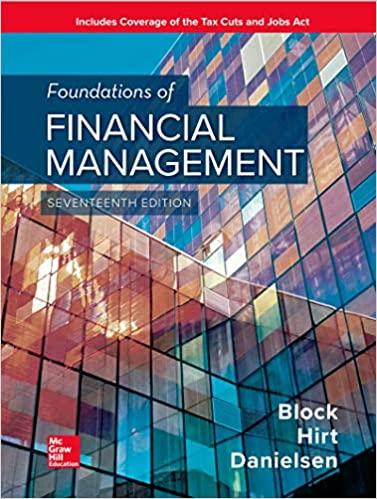Answered step by step
Verified Expert Solution
Question
1 Approved Answer
2) Use the following historical (2012) and projected (2013, 2014 and 2015) financial statement information to answer this problem. EBIT Tax Rate Required Level of




Step by Step Solution
There are 3 Steps involved in it
Step: 1

Get Instant Access to Expert-Tailored Solutions
See step-by-step solutions with expert insights and AI powered tools for academic success
Step: 2

Step: 3

Ace Your Homework with AI
Get the answers you need in no time with our AI-driven, step-by-step assistance
Get Started


